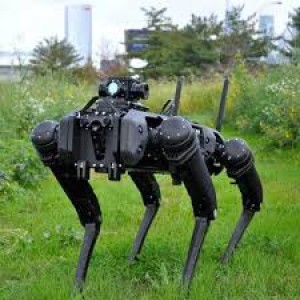
Enhancing Workplace Safety with Robotic Dog Bots: A Fusion of Innovation and Surveillance
In the realm of workplace safety, the integration of advanced technologies has become a cornerstone for ensuring the well-being of employees. From manufacturing plants to construction sites, the meticulous monitoring of Personal Protective Equipment (PPE) adherence is paramount. In this pursuit, the emergence of robotic dog bots equipped with embedded sensing, computer vision, artificial intelligence (AI), LiDAR, and other cutting-edge technologies has revolutionized surveillance practices, offering a potent solution to enhance safety protocols.
Drawing inspiration from nature's design, robotic dog bots emulate the agility and adaptability of their biological counterparts. However, their capabilities transcend those of living organisms, incorporating state-of-the-art sensors, processors, and algorithms. These mechanical marvels traverse work environments with unparalleled efficiency, executing tasks that range from routine inspections to emergency response.
At the heart of robotic dog bots lies artificial intelligence, empowering them to interpret complex data streams and make informed decisions autonomously. Through machine learning algorithms, these bots continually refine their understanding of environmental dynamics, adapting their behavior to evolving conditions. This cognitive capability enables them to proactively identify safety risks, preempting potential incidents before they escalate.
LiDAR (Light Detection and Ranging) technology serves as a cornerstone of robotic dog bot navigation, facilitating accurate mapping of indoor and outdoor spaces. By emitting laser pulses and measuring their reflections, these bots construct detailed three-dimensional representations of their surroundings. This spatial awareness enables them to navigate complex terrains, avoiding obstacles and optimizing patrol routes for maximum coverage.
In the context of workplace safety, the integration of robotic dog bots for PPE surveillance offers multifaceted benefits:
Robotic dog bots patrol work centers continuously, monitoring PPE compliance in real-time. They identify instances of non-compliance, such as improper wearing or absence of protective gear, and issue immediate alerts to personnel and supervisors. By aggregating and analyzing surveillance data, these bots provide valuable insights into PPE usage patterns and adherence trends. Employers can leverage this information to enhance training programs, implement targeted interventions, and reinforce safety protocols effectively.
Through proactive identification of safety hazards, robotic dog bots contribute to risk mitigation efforts, reducing the likelihood of workplace accidents and injuries.
While the deployment of robotic dog bots offers undeniable advantages, it also raises important ethical considerations, particularly regarding privacy and surveillance. Employers must implement robust protocols to safeguard employee privacy, ensuring that surveillance activities remain transparent, proportionate, and compliant with relevant regulations. Additionally, clear guidelines should govern the collection, storage, and utilization of surveillance data, prioritizing the protection of individual rights and freedoms.
In the pursuit of workplace safety, the integration of robotic dog bots represents a paradigm shift, leveraging advanced technologies to enhance surveillance of PPE adherence. By combining embedded sensing, computer vision, artificial intelligence, LiDAR, and other cutting-edge tools, these bots empower organizations to mitigate risks, prevent incidents, and cultivate a culture of safety. However, as we embrace the potential of automation and robotics, it is imperative to tread carefully, balancing innovation with ethical considerations and safeguarding the rights and dignity of workers. In doing so, we can forge a future where technology serves as a force for good, fostering safer, healthier, and more resilient workplaces for all.
